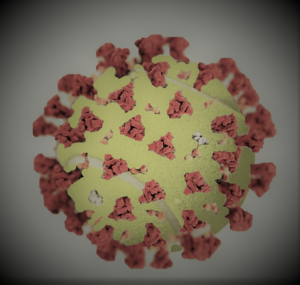The “Traveling Circus” is a Facebook group of active USTA tournament players in Texas. For example, if you are looking for a doubles partner for an event, it is the “go to” place to start the inquiry. Sometimes it is actually a better source of tournament information than the official USTA sources.
I recently threw out a question to the Circus asking about social distancing guidelines that were being requested and implemented in upcoming non-sanctioned tournaments and exhibition/demo days that had recently been publicized in that group. In the course of that discussion, I was pointed at two recent UTR tournaments that were held 30-31 May.
One UTR tournament was in Waco and the other was at he Austin Tennis Academy (ATA). For geographic perspective, Texas is a big state, but in this case the two tournament sites are only about 120 miles apart. There is quite likely some degree of overlap in the prospective player pool between these two events.
Both tournaments had in excess of 80 players, which was the stated “cap” on participation. That’s a huge turnout, especially when you consider the geographic proximity to the other tournament. People are ready to play.
Brian Notis, the director of the ATA tournament, published a safety protocol on the tournament’s UTR tournament page. He was also extremely generous in responding to my follow-up questions about his tournament. I provided a link to the safety protocols implemented in the reference list at the end of this post.
The ATA safety protocols are well written and it is obvious that an effort was being both to exercise prudent social distancing and to make players feel comfortable playing the event. There is a lot to break down in those safety protocols and I am probably going to be spending at least a couple more days in the near future deep diving the contents. Doing so is the very essence of this blog.
An obvious place to start in on this is to continue the line of thought started in “Tennis… We Need to Discuss Your Ball Hygiene” from last Saturday. In that post I discussed the divergent perspectives players have associated with risks associated with touching a tennis ball. In the absence of medical research to study the viability of virus transmission via balls, those divergent perspectives are likely to endure in the indefinite future.
The way the ATA tournament accommodated this was by providing a total of four balls for the match if either player requested separate balls. These four balls are really two pair, one for each player to use during their service games. As it turns out, it is pretty darn hard to serve without touching the ball. The tournament staff ensured that there was a unique number for each pair of balls provided for the match. In the case where neither player requested separate balls, the normal three were provided.
I think this is a reasonable approach under the circumstances. The number of balls required for the tournament moderately increases and only for those players who request it. Additionally, neither player is placed in the position of having to explain that they would like to play with separate balls to their opponent. That message is communicated by the number of balls placed on the court prior to the match.
The ATA safety protocol also contained the following statement:
While there are no direct medical concerns, this has been brought up as a personal concern by some players and we will always make the best decisions for players’ safety, comfort, & peace of mind.
As I wrote about in “Tennis… We Need to Discuss Your Ball Hygiene,” I have training partners that are on opposite ends of the COVID-19 perceived risk spectrum, which correlates very directly with attitudes toward ball hygiene. For people that are opposed to ball sharing, sometimes it is simply a matter of cost or inconvenience. To others, the resistance is sourced from a belief that acquiescing to separate balls validates or agrees that there is risk.
Against that backdrop, the statement highlighted above is an extremely deft way to address those divergent perspectives. The ATA protocol clearly communicates that playing with separate balls does not represent agreement that there is risk, but rather is something done to accommodate the comfort of the other player. It is simply a matter of making all prospective players feel safe.
The ATA tournament director, Brian Notis, indicated that only one player out of the 88 actually requested separate balls. I was surprised at the low number. UTR events are dominated by junior players, and Brian also observed that the junior demographic at his tournament didn’t seem to be too worried about social distancing based on his observations during that event.
I suspect that the frequency of separate ball requests in adult tournaments might trend higher because some players at those events are squarely in demographics that have elevated risk that is clearly indicated in the available medical data.
In any case, I am very impressed with what the ATA put together in terms of ball safety protocols for that tournament. It would be a terrific idea for the ATA protocols to be used as an exemplar for other events as the USTA transitions back into tournament competition.
- “$Prize Money Austin UTR Open @ Austin Tennis Academy,” https://app.myutr.com/events/15205, page viewed June 6, 2020.




Some questions that come to mind in returning to organized play by being strict about recommended practices:
(1) Is tennis too social?
Tennis is an inherently social sport. Tournaments and league play amplify this aspect of the sport. Are we creating an impossible situation by asking players to not be social?
(2) Is doubles practical?
Maintaining the recommended distance from a doubles partner is impractical and a bit silly. This seems to eliminate any meaningful strategy and meaningful net play. Would it be necessary to provide 8 balls per doubles match?
(3) Can everyone slap balls?
Do players know how to move a ball to the other side of the net without touching it? The pros accomplished this in Florida by using the foot/racquet sandwich and slap. But I think lower level, very young, or older players might struggle with this. This could lead to some interesting and time-consuming methods for ball retrieval and exchange.
(4) Is it asking too much of juniors?
Peer acceptance and peer pressure are still very alive and well at the junior level. If an opponent is vocal about sharing balls, this might force the opponent to make a decision that is not in his or her best interest. Is it psychologically too difficult for juniors to ask them to isolate themselves? The observation from the UTR tournament director suggests this might be the case.
(5) Who will enforce it?
I wonder who will have the responsibility of enforcing the guidelines at tournaments. What if an opponent accidentally touches an opponent’s ball? What if a player invade an opponent’s 6-foot radius? Is it just another tool for immature adults to use in their gamesmanship arsenal?
(6) Is it even fun?
If recommendations are strictly followed, is tennis really fun anymore? I assume most adult league and tournament players participate primarily in the pursuit of fun. Does playing under these constraints create more hassle than pleasure?
(7) Is there a solution?
Tennis is certainly a non-essential activity, but it also serves very different demographics. Junior tennis, adult tennis, and professional tennis all have different financial motivations and player goals. Under the assumption that most adult players are in it for recreational reasons, maybe it’s ok to put adult league and tournament play on hold until next spring. This is certainly the most vulnerable demographic, and science would have a chance to catch-up in terms of treatments or vaccines. I can’t imagine that tournament and league fees are critical to organizing institutions. Your model of seeking out practice matches and choosing a skill to improve seems to be the most responsible and reasonable choice for now.
All great points! You are highlighting some themes that I am anticipating getting into in as I continue to explore the return to play in general. The enforcement point… I had not thought about that potential abuse but I can totally see some ugly scenarios emerging. I am planning on tugging on the motivation thread Thursday or Friday this week. (Assuming that I don’t veer off on another tangent, which is my custom.)